The Pipevine Swallowtail (Battus philenor) is named for the toxic plant that their caterpillars eat, pipevine (Aristolochia macrophylla). This makes both the larvae and the adult butterflies poisonous to predators like birds.
How do you tell whether this butterfly is male or female?
The upper surface of the butterfly’s hind wings is an iridescent blue or blue-green. The iridescence of the female’s wings is duller than the male’s.
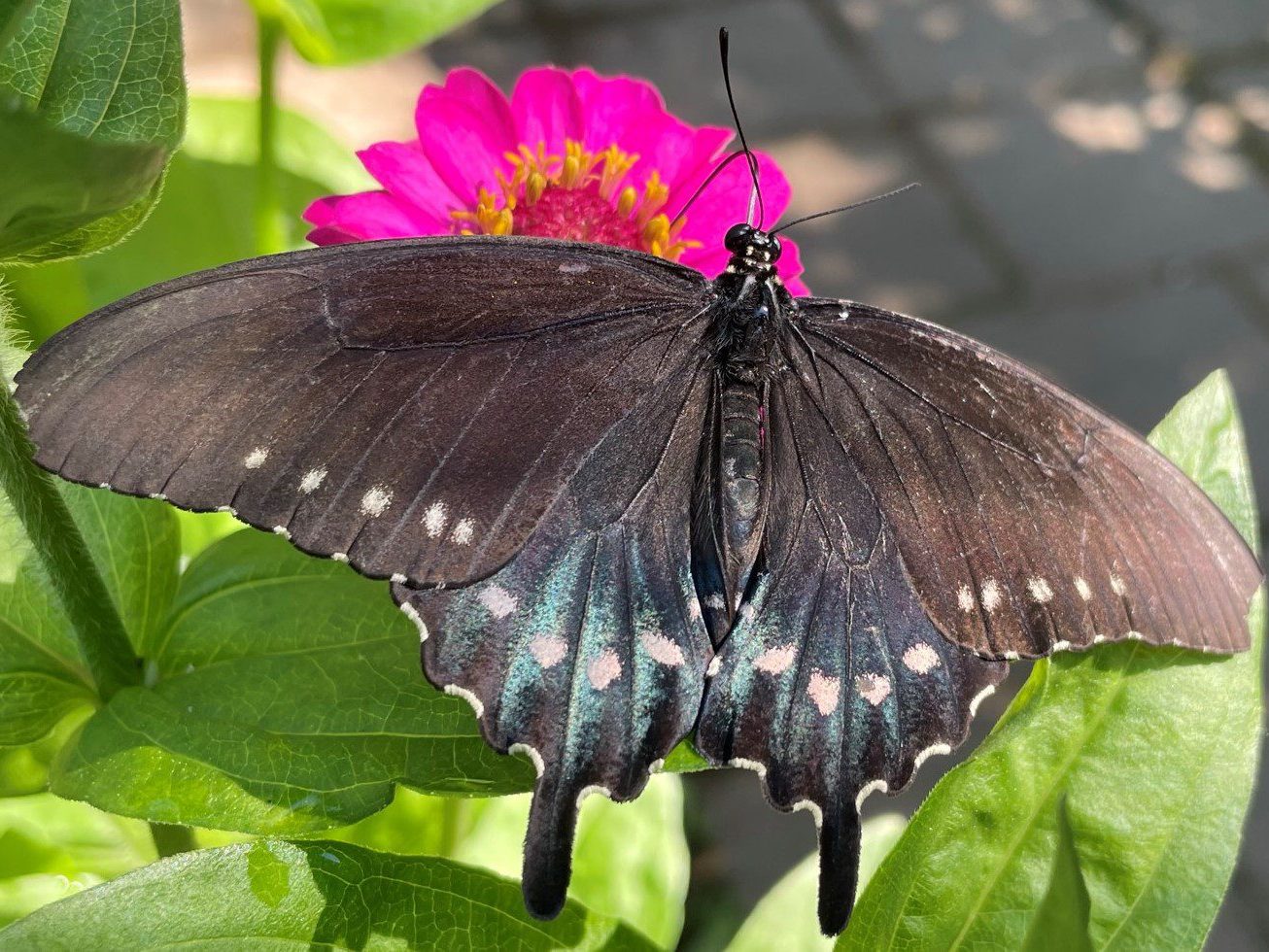
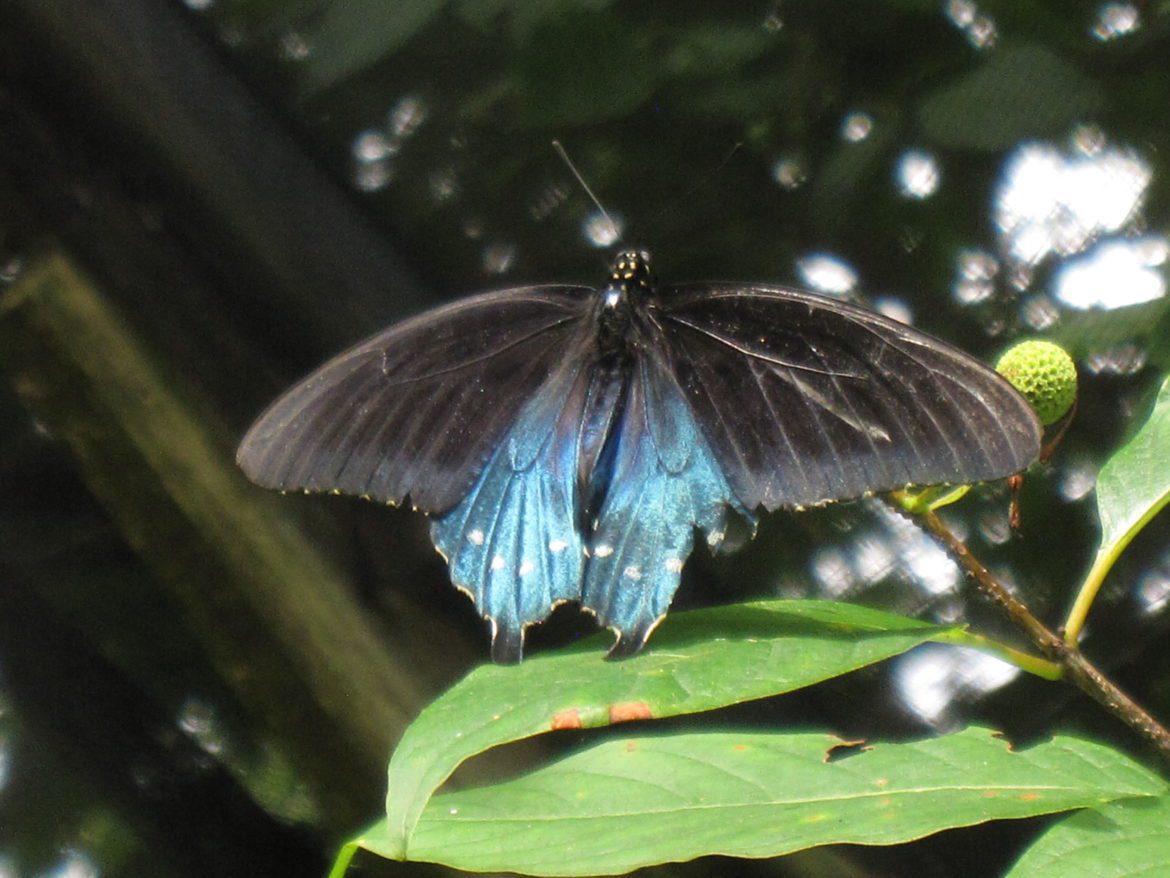
What butterflies look similar to this butterfly?
Four non-poisonous butterflies in Delaware mimic the Pipevine Swallowtail as a defense mechanism: the dark form of the Tiger Swallowtail female, the Red-Spotted Purple, the Black Swallowtail and the Spicebush Swallowtail.
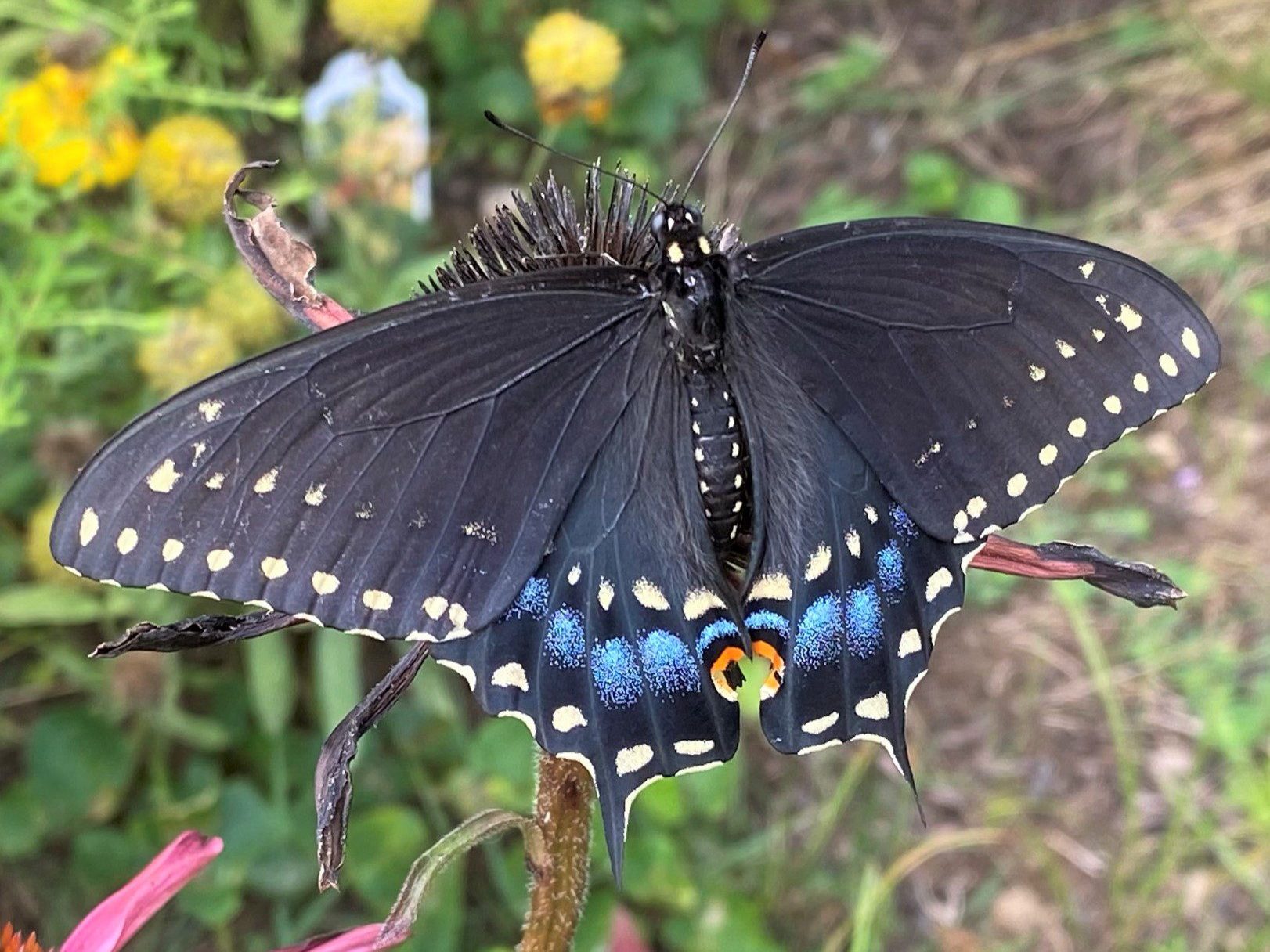
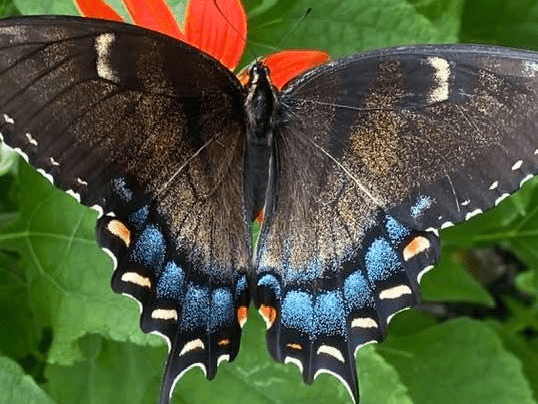
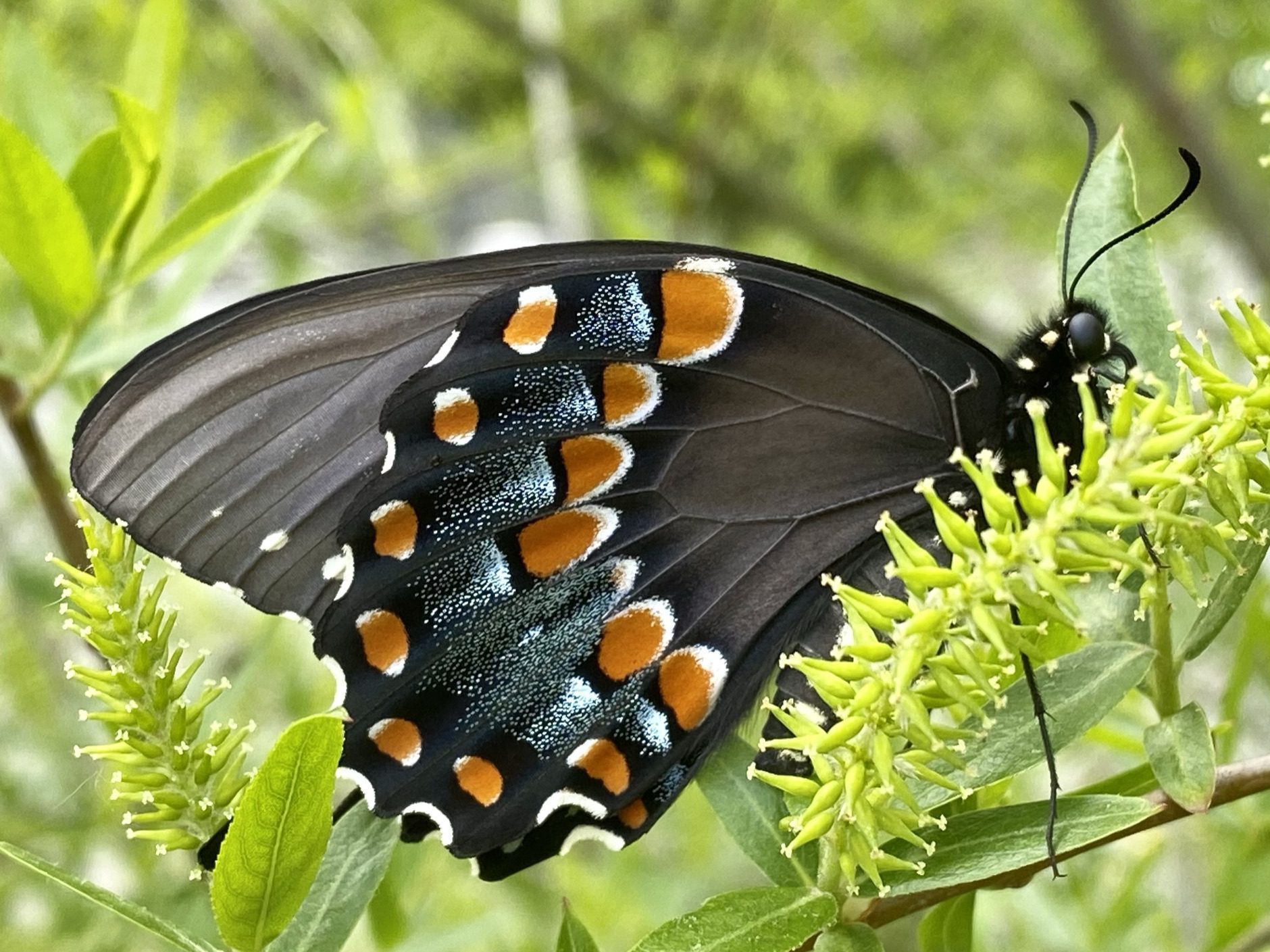
How can I find their eggs?
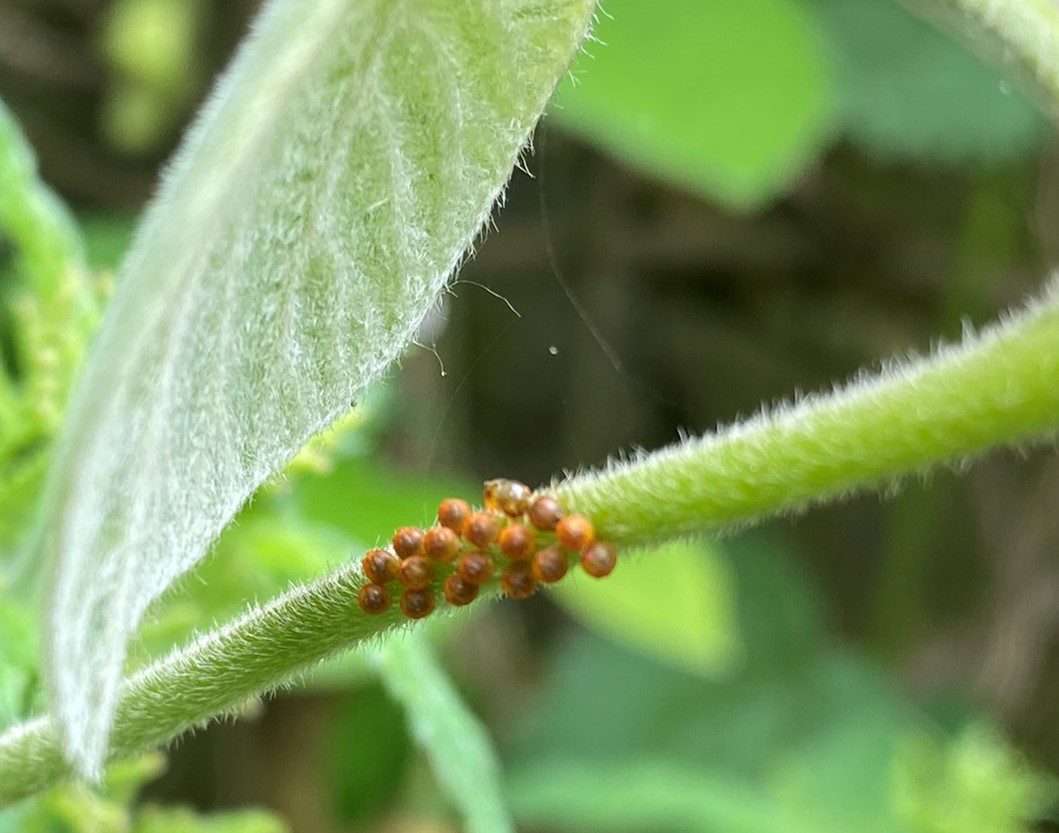
The Pipevine Swallowtail lays its reddish-orange eggs in clusters on the stem or leaves of the pipevine.
How do you identify a Pipevine Swallowtail caterpillar?
The young caterpillars feed together, but later will separate. Unlike other swallowtails, the caterpillars retain a similar appearance as they proceed through their “instars,” or stages, shedding their exoskeleton. They are nearly black with rows of reddish-orange bumps.
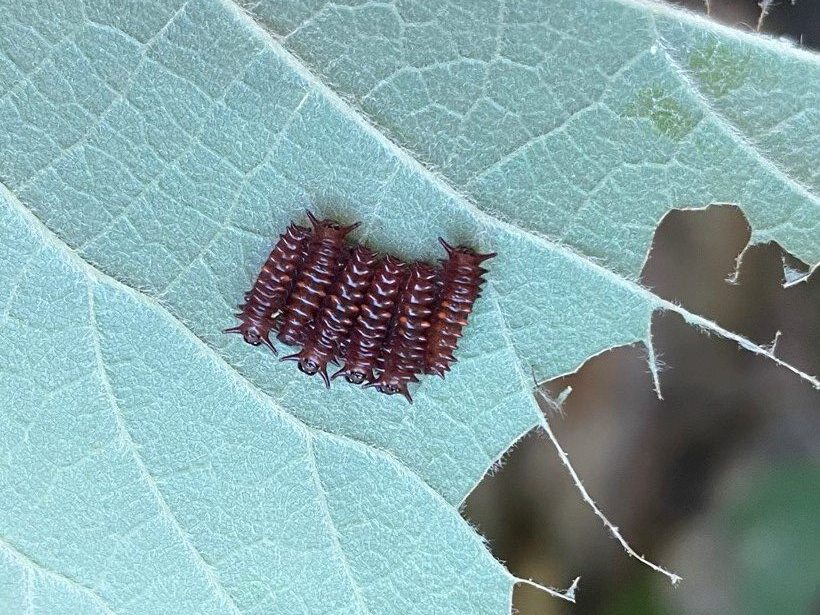
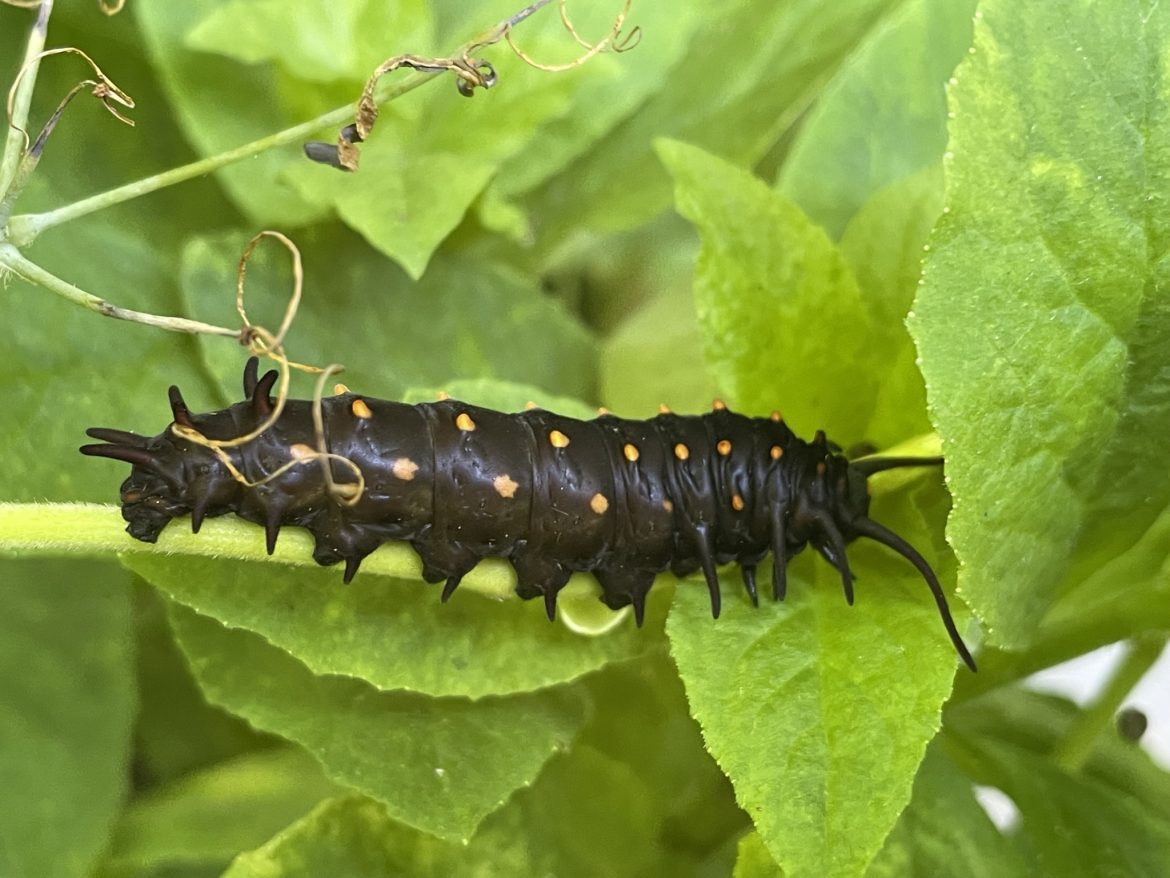
How do you identify the butterfly chrysalis?
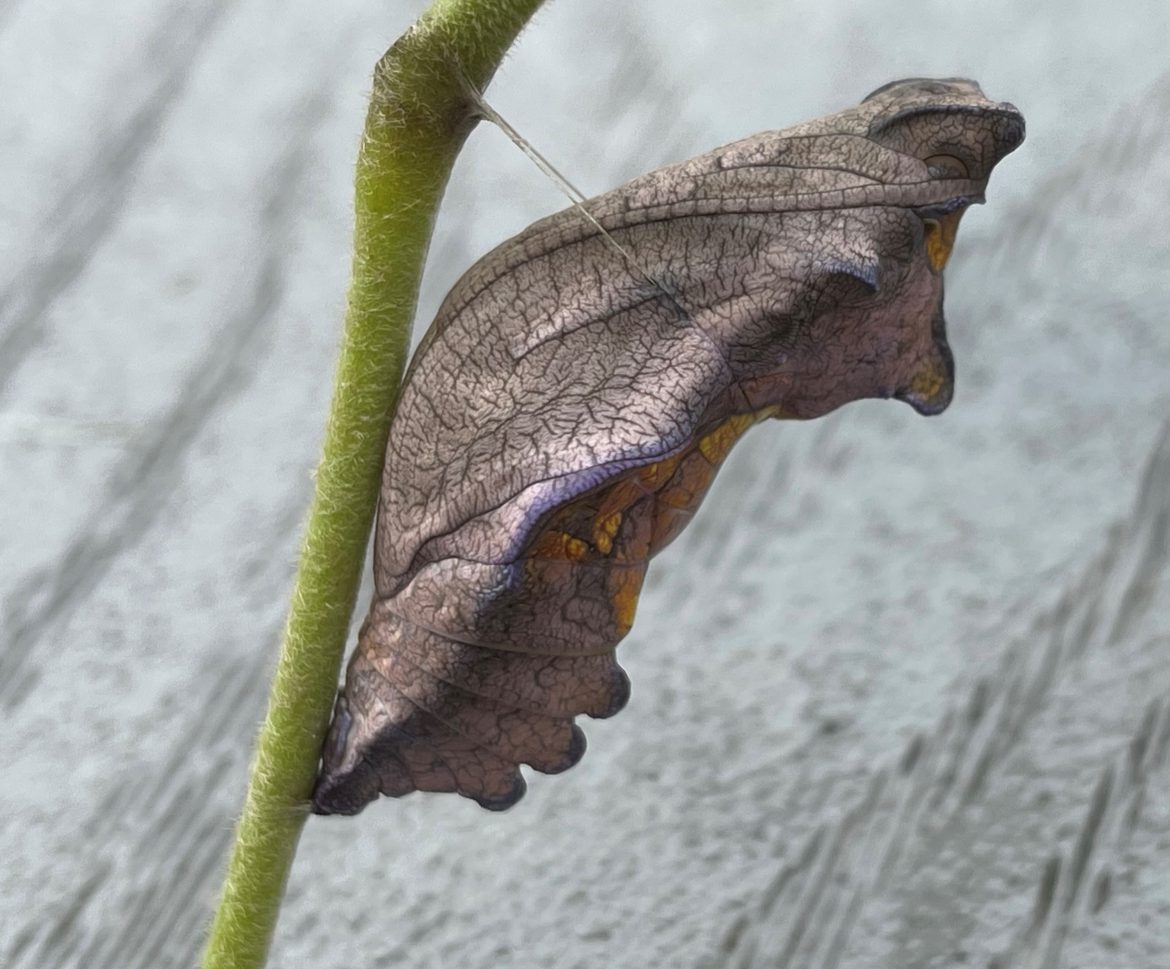
The chrysalis is brown or green, with patches of yellow or purple.
How do Pipevine Swallowtails survive the winter?
The last brood of the season will spend the winter in chrysalis, emerging the following spring when the warmer temperatures signal that there are nectar sources to feed on, and the air is warm enough for their flight muscles to work.
Ashland Butterfly Habitat Garden for Wildlife How We Protect Wildlife